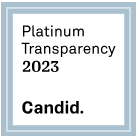Ending Student Hunger with Second Chance Breakfast
/A successful day at school starts with nutrition. Unfortunately, the one in four children who arrive to school without having eaten breakfast are missing out on the fuel they need to concentrate and learn. There’s good news in San Diego: local schools that have implemented Breakfast After the Bell have seen a more than 200 percent increase in the number of students who participate in breakfast programs.
How collaboration helped more students start the day with nutrition
Over the past year, San Diego Hunger Coalition has been a designated mentor to the San Diego Unified School District (SDUSD) to help implement alternate school breakfast programs. We provide technical assistance including site visits and remote consulting for the school district.
Data on breakfast participation and interviews with students revealed that traditional breakfast models (served before school starts) had only increased student participation by two percent. The SDUSD team and Robin McNulty, our Director of School Meals Programs, recommended a Breakfast After the Bell model called Second Chance Breakfast, or “Grab n’ Go,” for middle schools. As the name implies, students eat breakfast during a break in the morning, usually between first and second periods. The food items are offered from mobile carts located in high traffic areas where there are many students.
From June 2015 to September 2016, the San Diego Unified School District targeted 20 middle schools to implement food carts as an alternative to the school breakfast served in the cafeteria. They have seen significant increases in breakfast participation at three middle schools and two high schools. One middle school, Wilson Middle, had an incredible increase of 260 percent in breakfast participation – going from only 60 breakfasts served in September 2015 to 495 breakfasts served in June 2016.
We are proud of the progress San Diego Unified School District has made in serving more children breakfast, and excited to show how Breakfast After the Bell can have a tremendous impact on students’ ability to succeed in school.




